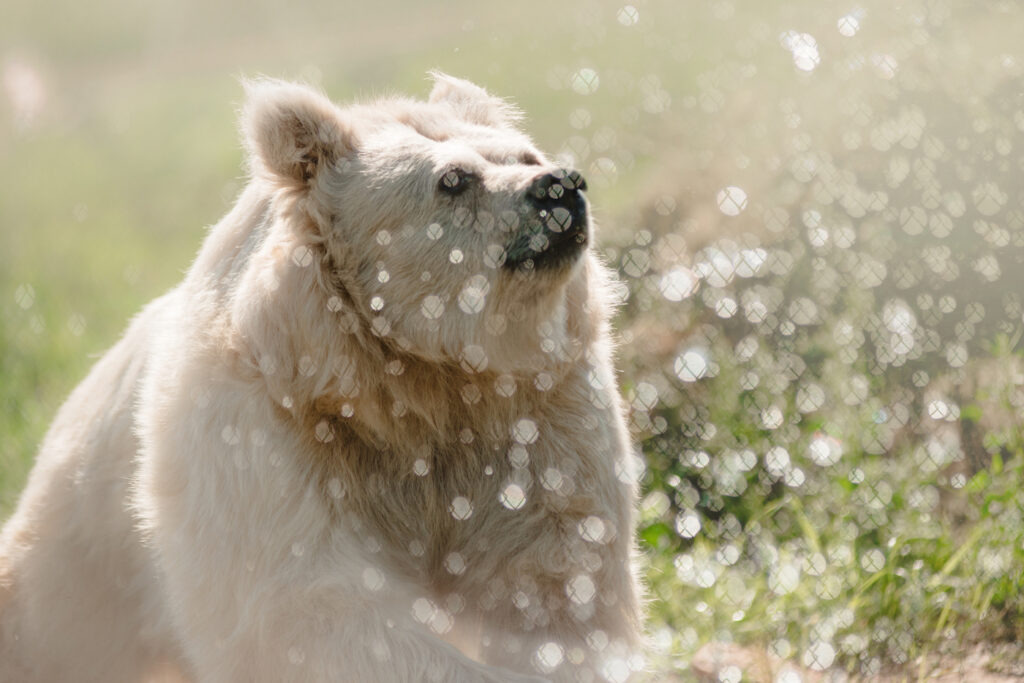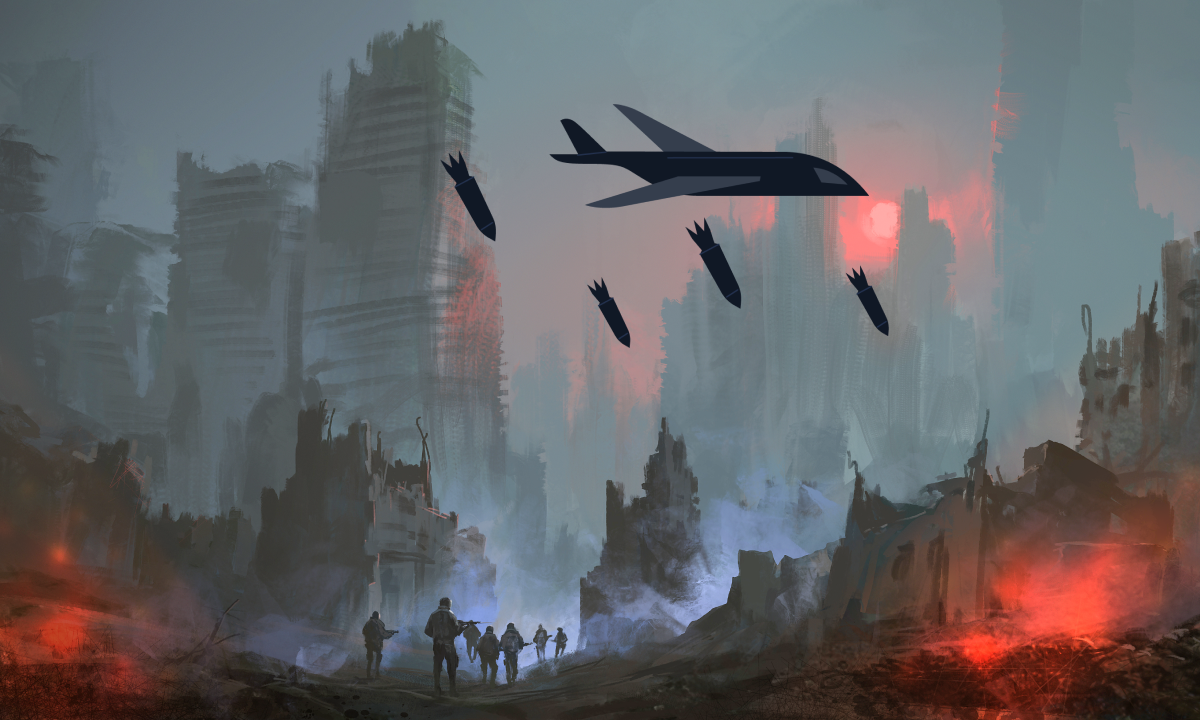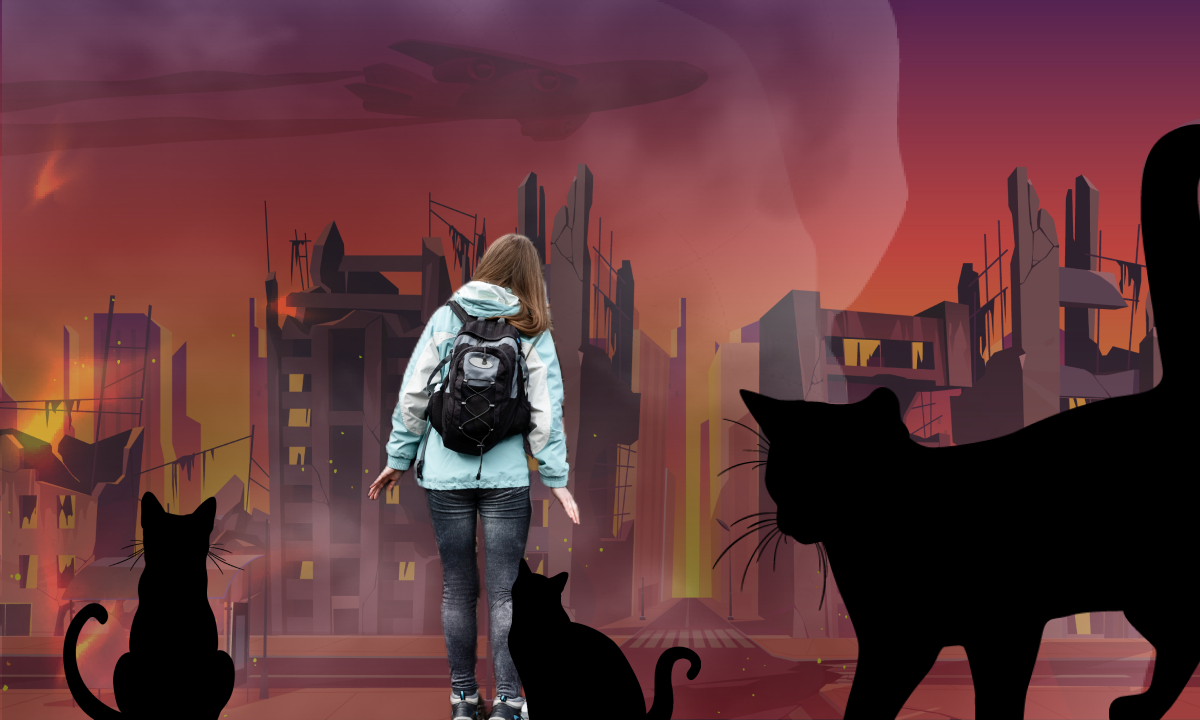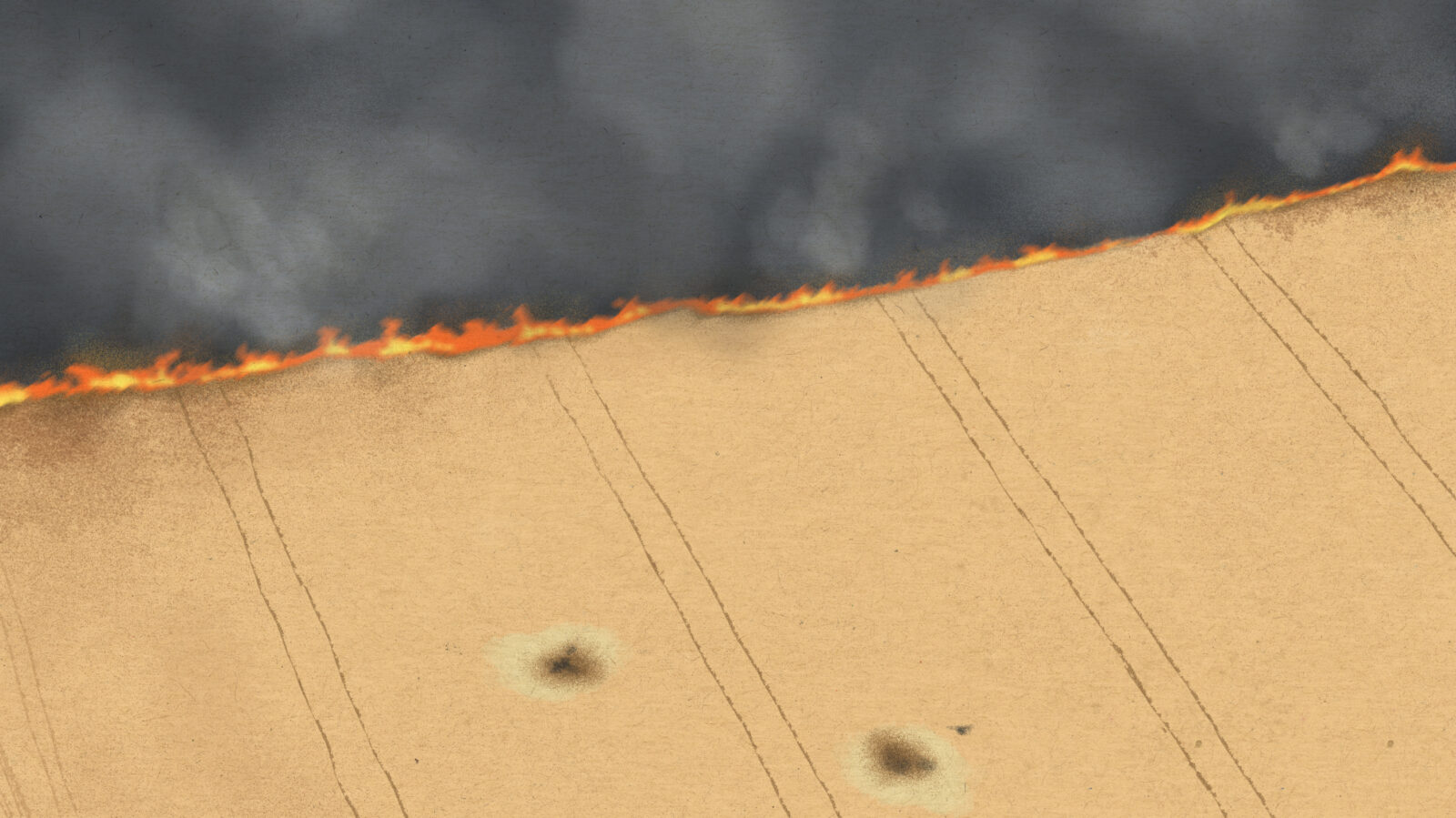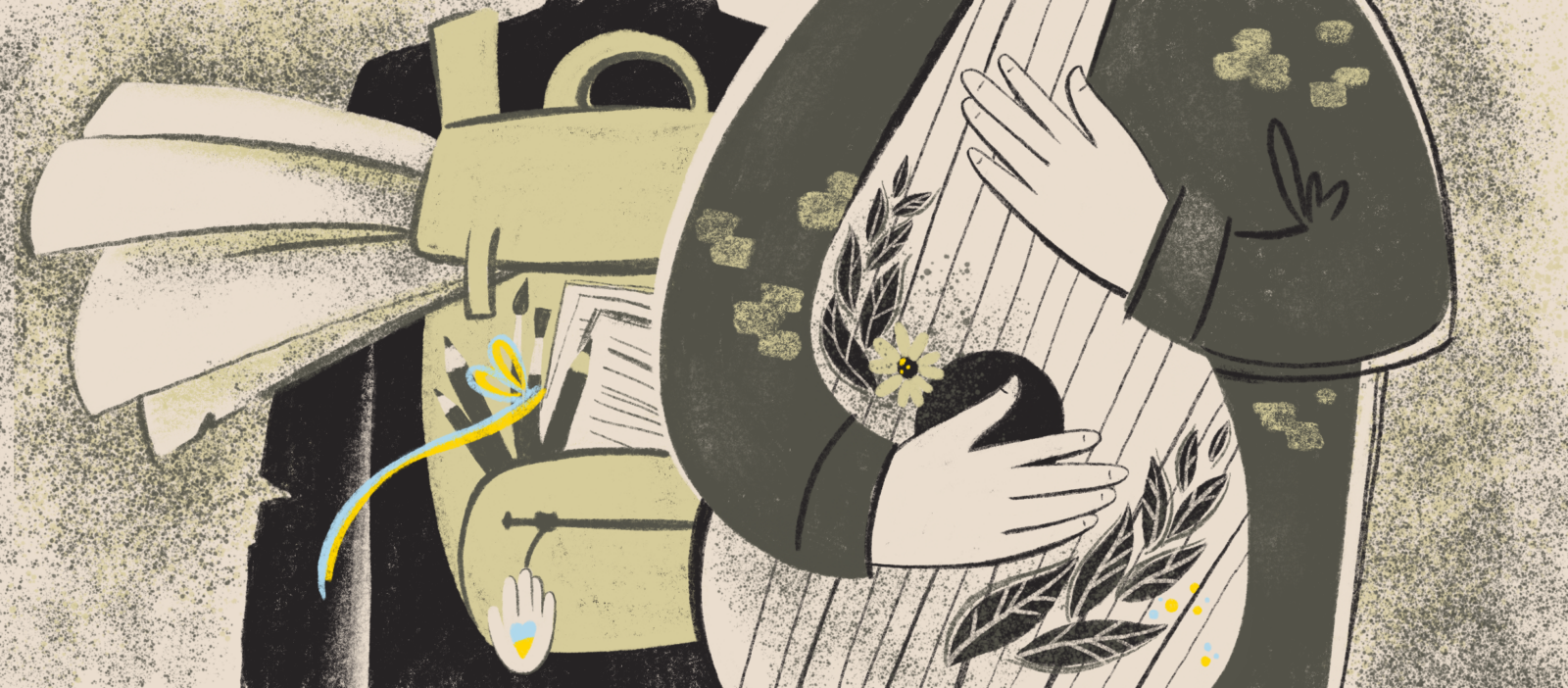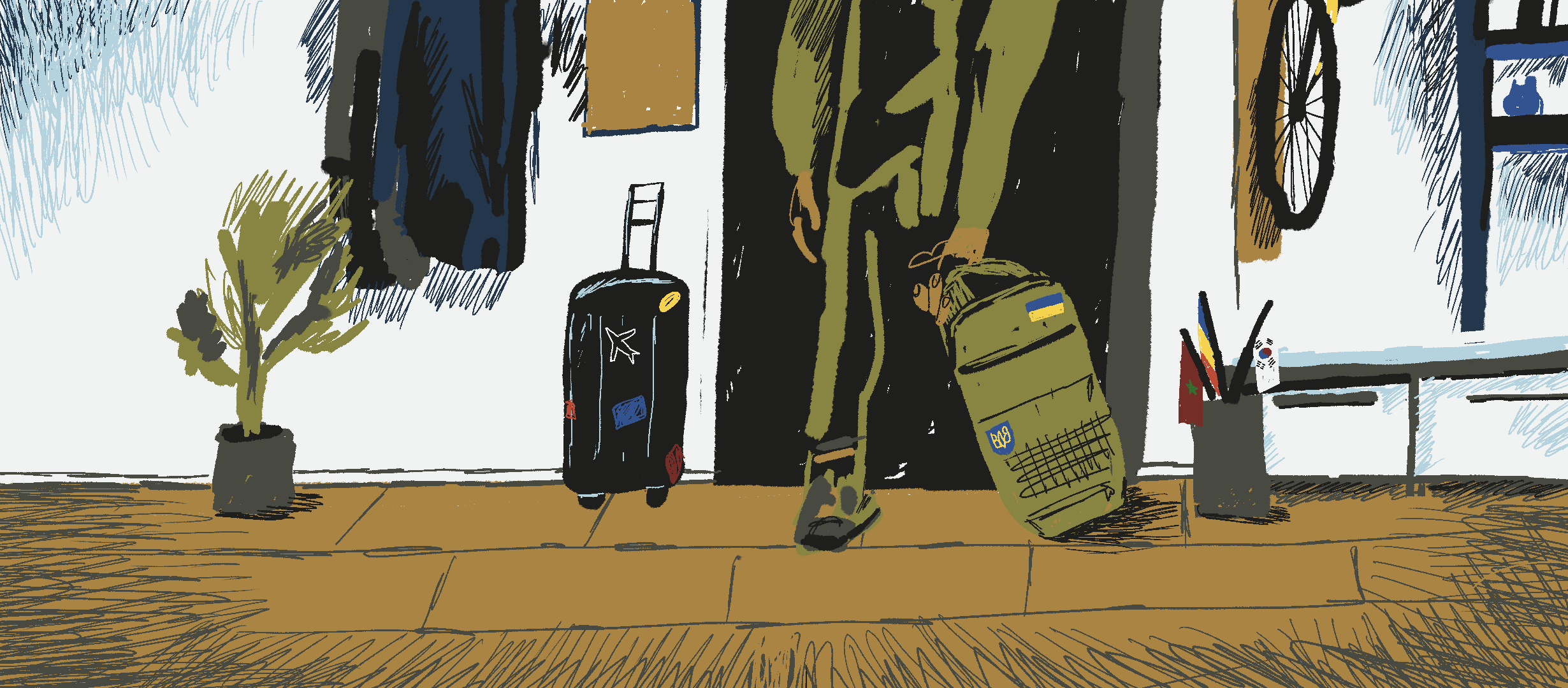“The worst thing for animals in a zoo or in a shelter is to stay without heating and food. The shelling was getting more and more intensive. We’ve heard Grads and Buks, some air fights. We had to turn off the lights. It was stressful. We didn’t sleep and couldn’t eat. We had to find a way to evacuate the bears,” Maryna Shkvyrya says. She is the forty-year-old Chief Zoologist at the Kyiv Zoo and a cofounder of the Save Wild fund, which builds a network of shelters for wild animals in Ukraine. Maryna and the team save bears captured for private zoos and circuses. The shelter Bila Skelya (White Rock), founded by the Save Wild fund, takes care of seven bears. Their names are Luba, Mykhasyk, Malvina, Chada, Papayi, Aska and Synochok. That’s how it worked in peaceful times. Now Maryna is also saving the bears. Now she is saving them from shelling.
“On February 24, at 4 a.m., my husband and I woke up from the sounds of explosions and flashes in the windows. In my head, there were totally irrational thoughts that everything would be alright. But within the next hour we took our belongings, papers, our pets—five dogs, four cats, snails—and set off to our shelter. We were afraid that our workers wouldn’t be able to get to the shelter and the bears would be left on their own,” Maryna says.
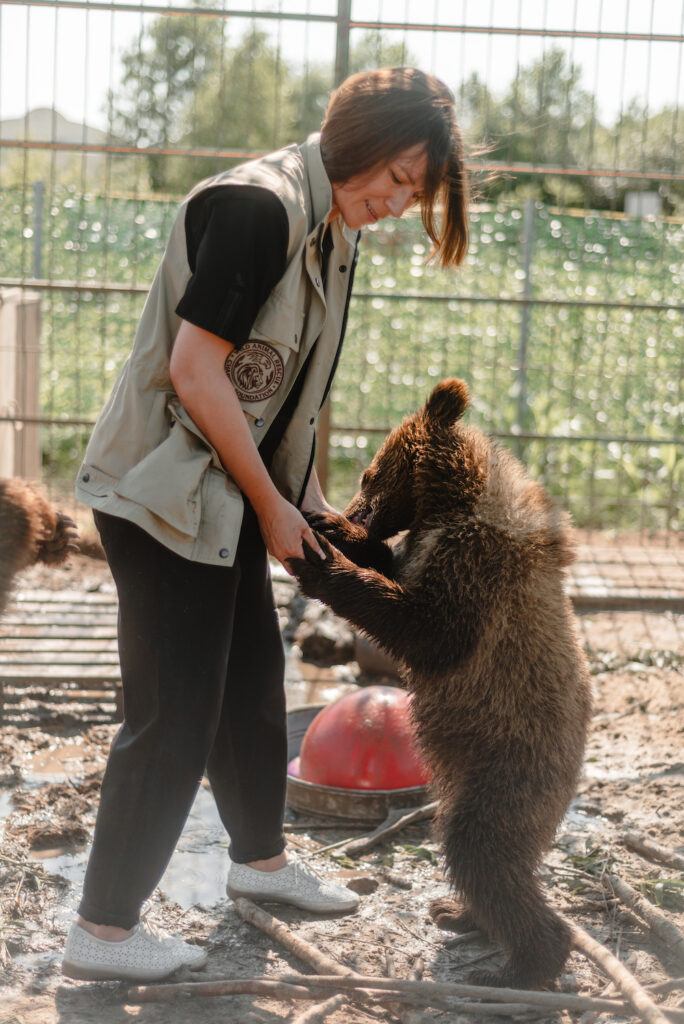
During the first week of the full-scale war Maryna, her husband Yehor Yakovliev, and another worker Iryna lived at the shelter and took care of the bears. By that time they’d helped another friendly shelter for wild animals to evacuate tigers, lions, caracals, an African wild dog, a monkey—all those who needed complicated food and fresh meat—to a safe place abroad.
It was almost impossible to set up the evacuation: it was difficult to find trucks, there was a scarcity of cages and anesthesia. And when they set off, they had to break through a military convoy of Russian machinery. And they broke through. Evacuated. The Poznan Zoo picked up the wild animals at the border with Poland.
After that, Maryna proceeded with rescuing the bears. The Domazhyr rehabilitation center, based near Lviv, agreed to shelter brown bears.
“The first truck took five bears and one lion. We didn’t know if we would come back for the two remaining bears. We’ve been loading those bears in extreme conditions. There were no veterinarians and we only had two doses of anesthesia.”
It took them 24 hours: checkpoints, queues of women with children, broken cars, lack of fuel at gas stations.
“It was emotionally hard. Not so long ago we moved from our old shelter in the Zhytomyr Region to the place near Kyiv. A new center was built during the year. We took a big loan to buy metal. And we had to cut up some of the structures which we planned to use for new aviaries to make cages for evacuation. When you’ve been building a shelter with your own hands, it is very difficult to leave and flee without even looking back. I hope the White Rock will withstand it,” says Maryna.
Now the team, together with other organizations, is helping the Shelter for Wild Animals to arrange corridors for evacuating wild animals from unsafe locations where other shelters or private zoos are located. Some shelters are left without food and heating. In Kharkiv, the Feldman EcoPark was shelled. There are casualties among its workers. Aviaries were ruined, animals were killed. One missile hit the territory of the Mykolaiv State Zoological Garden but didn’t explode. At the Kyiv Zoo, workers continue to live next to the animals and take care of them.
